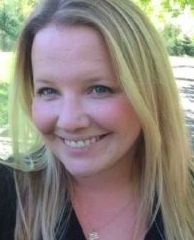|
Symphony
MONUMENTAL MAHLER 5TH IN SO CO PHIL'S SEASON ENDING CONCERT
by Terry McNeill
Sunday, April 14, 2024
Chamber
OAKMONT SEASON CLOSES WITH STRAUSS' PASSIONATE SONATA
by Terry McNeill
Thursday, April 11, 2024
Chamber
MORE GOLD THAN KORN AT ALEXANDER SQ CONCERT
by Terry McNeill
Sunday, April 7, 2024
Choral and Vocal
VIBRANT GOOD FRIDAY REQUIEM AT CHURCH OF THE ROSES
by Pamela Hicks Gailey
Friday, March 29, 2024
TWO OLD, TWO NEW AT THE SR SYMPHONY'S MARCH CONCERT IN WEILL
by Peter Lert
Saturday, March 23, 2024
Chamber
NOT A SEVENTH BUT A FIRST AT SPRING LAKE VILLAGE CONCERT
by Terry McNeill
Wednesday, March 20, 2024
THIRTY-THREE PLUS VARIATIONS AND AN OCEAN VIEW
by Terry McNeill
Saturday, March 16, 2024
Choral and Vocal
A ST. JOHN PASSION FOR THE AGES
by Abby Wasserman
Friday, March 8, 2024
Choral and Vocal
SPLENDID SCHUBERT SONGS IN SANET ALLEN RECITAL
by Terry McNeill
Saturday, March 2, 2024
Chamber
SHAW'S MICROFICTIONS HIGHLIGHTS MIRO QUARTET'S SEBASTOPOL CONCERT
by Peter Lert
Friday, March 1, 2024
|
 |
 Soprano Dianna Morgan |
OLD NORTH GERMAN CAROLS IN SONOMA BACH'S SCHROEDER CONCERT
by Sonia Morse Tubridy
Sunday, December 15, 2019
“Cast off all sorrows…also dance in heavenly fashion.” A volume called Piae Cantiones was printed in 1582 in North Germany, lively songs going back to the 14th century, and this treasure trove provided material for numerous composers to arrange Christmas carols over following generations, from simple monophonic to elaborate settings. For a Dec. 15 concert at Schroeder Hall, Sonoma Bach director Robert Worth created a unique and splendid program using these “antique-yet-fresh” polyphonic songs by Northern European composers, including instrumental works for brass ensemble and organ variations.
For the concert’s first half the program’s structure followed sections of the mass: Prelude, Kyrie, Gloria, Credo, Sanctus and Agnus Dei. Each part was then filled with wonderfully chosen and combined arrangements for the various ensembles filling the stage, mixed and matched with originality. The Prelude commenced with a Canzon by Paul Peuerl, the Whole Noyse Brass Ensemble (cornets, sackbuts and curtal) creating sounds of warmth and sweetness in canonic phrases evoking human voices. This was followed by a carol from Piae Cantiones starting in vocal unison and then, incorporating instrumentalists, sprightly and dancing. Additional performers were from Circa 16000 and Northern Climes.
The Kyrie eleison was comprised of two choral arrangements by Michael Praetorius and by Mogens Pederson. This music had a variety of solo, choral and instrumental combinations. There were lovely harmonies and rhythmic freedom. The Henk Klop continuo organ, played by David Parsons, provided the Chorale variations arranged by Paul Siefert to round off each segment of the program. These were delightful interpretations. The Credo portion started with a chant and then an unusual blend of high voices and high pitched instruments. This was followed by Praetorius’ “ein Kindelein so loblich” and a version that was 16th-century anonymous. Next came a Pederson Credo and a somber variation on the organ. All the music was accessible to singers and listeners. The intonation and blend were excellent and the beauty of sound came into motion with a sense of ease and naturalness, never forced and always inviting.
The Sanctus selections continued with the attractive simplicity and freedom of arrangements, moving from chorale-like textures to charming dance rhythms. The Agnus Dei featured much unison singing and echo effects. It ended with Hieronymous Praetorius’ rich and powerful music, his “Dona nobis pacem” clear in texture and moving. The music seemed to combine with one’s thought processes and the final cadences brought out expressive inner voices. The audience was moved and enthusiastic. Worthy of special praise were Mr. Parsons and soprano Dianna Morgan.
After intermission Erasmus Widmann, an important composer in the development of instrumental ensemble music, was represented in a Canzon that was like a friendly contemplative conversation. There followed an energetic and syncopated Gaudate, a gentle Danket dem Herren, and Zu Lob und Ehren. The next set, Three Songs, continued the Christmas joy with selections by the composers heard before with new settings. The programming was like a fine tapestry of story in sound. The set of cradle songs had a gentle style, then unison passages, then solos, until all forces on stage combined for a glorious Hieronymus Praetorius Gaudate Omnes: “Rejoice and be glad…enter into his presence with singing. Alleluia.”
The fortunate community of performers and audience seemed to be enveloped in joy, hope and healing.
Appreciative applause brought Mr. Worth and singers back for an encore, a quodlibet from the 15th century by Paterson: in Dulci combined with Omnes Mundes. This was both interesting and humorous, “a stew of songs”.
|
